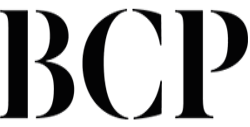| Retirement | Investments | Insurance |

Assessment of Budget 2023
The global and domestic economic background against which Budget 2023 was prepared and delivered was very challenging. Global economic policy makers, political leaders and business leaders are facing immense challenges due to a combination of rapidly rising inflation; ongoing supply-chain difficulties; rapidly rising interest rates; intense global geo-political uncertainty; and a much more uncertain global economic outlook.
The war in Ukraine has compounded pre-existing challenges emanating from the pandemic, and the consequences are proving very challenging. To date, Ireland has proved relatively immune to the global growth pressures, but this is starting to change and it seems inevitable that Irish economic activity will ease over the coming months.
Budget 2023 can accurately be described as a ‘cost-of- living’ budget. €4.4 billion is being allocated to ‘once-off measures’, with €1.7 billion related to tax measures and
€2.7 billion in expenditure measures. (€300 million of this expenditure is coming from the Contingency Reserve Fund). The core budget package totalled €6.9 billion, with €5.8 billion accounted for by increased expenditure and €1.1 billion accounted for by taxation measures.
In summary, the total budgetary package totalled €11.3 billion, including the €300 million from the Contingency Reserve Fund. This is an incredibly large fiscal package. However, in the circumstances, Budget 2023 was always going to be a very political and populist budget offering with a significant package of once-off measures delivered alongside a significant expansion in government expenditure.
The International context for budget 2023
Global economic background
The global economy has been hit badly by Russia’s invasion of Ukraine. Global economic growth stalled in the second quarter of 2022, and indicators in many economies are now pointing towards an extended period of subdued growth. The war has pushed up energy and food prices substantially, which is aggravating inflationary pressures at a time when the cost of living was already rising rapidly around the world due to the pandemic.
The latest assessment from the OECD1 in September saw a significant deterioration in the outlook compared to its last forecast in June. Global growth is projected to slow from 3 per cent in 2022 to 2.25 per cent per cent in 2023, well below the pace foreseen prior to the war. In 2023, the OECD is estimating that real global incomes could be around USD 2.8 trillion lower than expected a year ago. This is a significant global economic shock.
Annual GDP growth is projected to slow sharply to 0.5 per cent in the United States in 2023, and 0.25 per cent in the euro area, with risks of output declines in several European economies during the winter months. Growth in China is projected to drop to 3.2 per cent this year, due to COVID-19 shutdowns and significant property market weakness, but policy support is expected to help growth recover somewhat in 2023. (Table 1).
Inflation is dominating global economic discourse at the moment. US inflation is currently running at 8.3 per cent;
- OECD Economic Outlook, Interim Report September 2022: Paying the Price of War.
Euro Zone inflation is at 9.1 per cent; German inflation is at 7.9 per cent; French inflation is at 5.9 per cent; UK inflation is at 9.9 per cent; and Irish inflation is at 8.7 per cent. Even in Japan, inflation has reached 3 per cent, which is the highest level since September 2014.
The OECD is forecasting that headline inflation is projected to ease from 8.2 per cent in 2022 to 6.6 per cent in 2023 in the G20 economies.
Table 1: OECD Global Economic Outlook
| REGION | 2021 | 2022f | 2023f |
| World | 5.8% | 3.0% | 2.2% |
| G20 | 6.2% | 2.8% | 2.2% |
| Euro Area | 5.2% | 3.1% | 0.3% |
| Germany | 2.6% | 1.2% | -0.7% |
| France | 6.8% | 2.6% | 0.6% |
| Italy | 6.6% | 3.4% | 0.4% |
| Spain | 5.5% | 4.4% | 1.5% |
| UK | 7.4% | 3.4% | 0.0% |
| US | 5.7% | 1.5% | 0.5% |
| China | 8.1% | 3.2% | 4.7% |
| India | 8.7% | 6.9% | 5.7% |
Source: OECD, September 2022.
Global political background
On the geo-political front, the world is facing immense political change and challenges. The Russian invasion of Ukraine is not going well for Russia and President Putin is now resorting to nuclear threats and mobilisation of males aged between 18 and 65. The general election in Sweden on 11th September saw the government parties lose their majority and a right of centre government looks likely. The Italian elections saw right wing parties emerge victorious. In the UK, Liz Truss succeeded Boris Johnson as leader of the Conservative party and Prime Minister. The first action of the new regime was to introduce a ‘mini-budget’ that represents a dramatic fiscal expansion.
The UK mini-budget
The incoming UK Chancellor, Kwasi Kwarteng, announced a tax-cutting package worth around £45 billion by 2026/27, representing the largest tax-cutting package in 50 years. Key measures included the abolition of the higher 45 per cent tax rate; a reduction in the lower basic rate from 20 per cent to 19 per cent; the proposed increase in the corporation tax rate from 19 per cent to 25 per cent next year will not happen; the 1.25 per cent
rise in national insurance contributions announced earlier this year will be cancelled from 6th November; the cap on bankers’ bonuses will be scrapped; there is a doubling of the stamp duty exemption on houses to
£250,000; the threshold for first-time buyers will increase from £300,000 to £425,000; the maximum property value for first-time buyers’ relief will increase from £500,000 to
£625,000; the 8 per cent charge on bank profits will not be reduced next year as planned; taxes on dividends will be reduced; the planned increase in duty rates for beer, wine and cider will be cancelled; and 40 investment zones will be created around the UK, with tax breaks for business. There has also been a significant increase in expenditure, with the energy price cap the key element.
The mini-budget is incredibly stimulatory and aims to raise UK trend growth to 2.5 per cent. The markets reacted very badly. Gilt yields have increased significantly and sterling has fallen to its lowest ever level against the dollar. The markets have decided that Kwarteng’s tax cuts will lead to higher interest rates and that a deterioration in the public finances will undermine the UK’s long-term growth prospects. The reaction of the Bank of England to such a fiscal stimulus at a time when it is fighting to bring inflation under control will be interesting to observe. Weaker sterling will also increase imported inflation. The Institute for Fiscal Studies has warned that borrowing will top £190 billion, which would represent the third highest peak since the second world war.
Interest rates
At the annual meeting of central bankers at Jackson Hole, Wyoming, in late August, a consensus emerged that many global central banks will continue to tighten monetary policy in an effort to prevent inflation from becoming entrenched. In effect, this is an explicit admission that there is a determination to bring inflation under control, even if this means forcing economies into recession and forcing unemployment higher. Such outcomes are regarded as a price worth paying to get inflation back under control.
The European Central Bank (ECB) increased interest rates by an unprecedented 0.75 per cent at its September meeting, following an increase of 0.5 per cent in July. The key refinancing rate now stands at 1.25 per cent. The ECB has indicated that interest rates should rise further over the next several meetings and that rates are still far away from the rate that will take inflation back to its 2 per cent target.
On September 21st, the US Federal Reserve Bank increased interest rates by 0.75 per cent, taking the
target range for the key Federal Funds rate to 3-3.25 per cent. This was the fifth consecutive rate increase and has pushed borrowing costs to the highest level since 2008. It now anticipates that interest rates will have to be increased further in the ongoing battle to bring inflation under control. According to the US central bank, inflation remains elevated, which reflects supply and demand imbalances related to the pandemic, higher food and energy prices, and broader price pressures. At the same time there is modest growth in spending and production, but the labour market is still robust with an unemployment rate of just 3.7 per cent and the inflation rate remains substantially above the 2 per cent target.
The latest projections from the Federal Reserve show the policy rate reaching 4.4 per cent by the end of 2022, before topping out at 4.6 per cent in 2023. These are only projections and the Federal Reserve will continue to monitor economic activity and inflationary pressures over the coming months and will react accordingly. The risks to US interest rates are still clearly on the upside and the risks to economic growth are clearly on the downside.
On September 22nd, the Bank of England increased interest rates by 0.5 per cent, taking the base rate to 2.25 per cent, which is the highest rate since the beginning of the financial crisis in 2008. It suggested that there would be ‘further, forceful’ monetary tightening in November to bring inflation under control. This likelihood has been increased by the ‘mini-budget’ introduced on 23rd September.
Apart from the Euro Zone, the US and the UK, interest rates are also rising in many other monetary jurisdictions. In September, the Norwegian central bank increased rates by 0.5 per cent; the Swedish central bank raised rates by 1 per cent, which was its largest rate increase in three decades; and the Swiss National Bank increased rates by 0.75 per cent, becoming the last European central bank to turn rates positive.
The Bank of Japan is persisting with its ultra-loose monetary policy and it is now the only remaining central bank in the world with negative interest rates. However, as rates rise elsewhere, the Yen is under significant pressure and has fallen to a 24-year low against the dollar. The Bank of Japan has been forced to intervene to support the ailing currency, which is the first time that it has intervened to support the Yen since the late 1990s.
Exchange rates
The key theme on global currency markets in recent months has been the strength of the dollar. This has resulted in currency market intervention by the Bank of Japan, but the strong dollar is also causing significant problems for emerging economies who have dollar- denominated debt, and who are facing imported inflationary pressures, as many commodities are priced in dollars. The World Bank has warned that although rate rises are necessary to quell inflation, the aggressive nature of the tightening could risk sending the global economy into a ‘devastating’ recession that would leave the world’s poorest countries at risk of collapse. The World Bank has drawn comparisons with the early 1980s, when the surge in global interest rates and consequent slump in global trade sparked the Latin American debt crisis and a wave of defaults in sub-Saharan Africa.
Summary
In summary, the global economic backdrop and outlook is now of great concern. Equity markets are very volatile, nervous and weak; bond yields are rising; central banks everywhere are increasing interest rates; commodity prices are at still at elevated levels, albeit declining; inflation is continuing to scale heights not seen in over 30 years; and the Ukraine war and its consequences are showing no signs of ending anytime soon.
The OECD admits that significant uncertainty surrounds its global growth projections. More severe fuel shortages, especially for gas, could reduce growth in Europe by a further 1.25 percentage points in 2023, with global growth lowered by 0.5 percentage point, and this would raise European inflation by over 1.5 percentage points.
Economic and political uncertainty is the key theme at the moment and this is likely to be the dominant theme for the foreseeable future. Setting an Irish budget against this backdrop was always going to be challenging.
The domestic context for budget 2023
For the small open Irish economy, this very uncertain and challenging external background; the deterioration in the cost of living and the cost of doing business; and increasing interest rates are of deep concern. To date, there is limited evidence that the external difficulties are having a significant impact, but some signs of stress are starting to emerge, in the consumer sector in particular, but greater business caution is also becoming more evident. It seems inevitable that growth will slow over the coming months.
The labour market
The labour market performance has been very strong in 2022. Employment reached a record high of 2.554 million at the end of Q2 2022, and the unemployment rate declined to 4.3 per cent of the labour force in August, down from 5.5 per cent a year earlier. Unemployment at the end of August stood at 117,200, which is 23,500 lower than a year earlier.
External trade
The external trade performance continues to be very strong in 2022. In the first 7 months of the year, merchandise exports were 27.6 per cent ahead of the equivalent period in 2021. Exports of food and live animals expanded by 20.8 per cent (6.7 per cent of total exports); Chemicals and related products increased by 30.9 per cent (64.9 per cent of total exports); and machines and transport equipment by 17.2 per cent (13.3 per cent of total exports). While the agri-food sector is performing strongly, the foreign-owned component of the industrial base continues to be the main driver of buoyant exports.
The housing market
Housing continues to be the biggest economic, social and political crisis facing Ireland. House prices and rents continue to grow strongly.
In the year to July, national average residential property prices increased by 13 per cent, with prices in Dublin rising by 10.4 per cent and prices outside Dublin rising by 15.2 per cent. This is down from a peak growth rate of
15.1 per cent in national average prices in March; a peak growth rate of 13.2 per cent in Dublin in February; and a
![]() Figure 1: Consumer Confidence
Figure 1: Consumer Confidence
peak growth rate of 17.1 per cent in the Rest of Ireland in March.
In July, the national Residential Property Price Index (RPPI) showed that national average residential property prices are now 0.8 per cent above the highest level recorded at the peak of the economic boom in April 2007. Dublin residential property prices are 7.9 per cent lower than their February 2007 peak, while residential property prices in the Rest of Ireland are 0.1 per cent lower than their May 2007 peak.
The escalation in prices to such dangerous and economically disastrous levels is due to a combination of strong demand; limited supply; a strong labour market, with a significant segment of the working population doing very well financially; and a lot of cash driving demand.
The Central Bank’s mortgage lending restrictions have prevented the banks from lending recklessly as they did in the past. Logically, based on rising interest rates and the difficult global outlook, house price inflation should moderate over the coming months and probably decline over the next couple of years, but logic is rarely evident in the housing market. If prices continue to rise, it is just moving the market into a more dangerous situation, which could ultimately result in a more serious correction.
Consumer dynamics
Consumer confidence has weakened sharply so far this year due to the Ukraine war, the escalating cost of living, rising interest rates and general uncertainty about the global economic outlook.
Source: KBC Bank
The weakness in consumer sentiment is being reflected in a slowdown in consumer spending. In the three months to the end of July the volume of retail sales was
6.3 per cent lower than a year ago, and the value of sales was 0.4 per cent higher, reflecting the rapid escalation in consumer prices.
Inflation
The escalating cost of living has become the issue of political and social concern over the past year. In the year to August 2022, average consumer prices increased by 8.7 per cent. Supply chain difficulties due to Covid created considerable price pressures initially, but the war in Ukraine has exacerbated the price pressures, particularly in energy-related components of inflation, but food price inflation is now starting to accelerate. In general, inflationary pressures are starting to become embedded in the system and most sectors are now experiencing strong rates of price increase.
In the year to August, of the 8.7 per cent overall increase; housing, water, electricity and gas accounted for 3.27 per cent; transport accounted for 2.02 per cent, restaurants and hotels accounted for 1.15 per cent; and food and non-alcoholic beverages accounted for 1.03 per cent.
It seems clear that price pressures will remain strong over the coming months and a key focus of Budget 2023 will be to alleviate the cost-of-living pressures on households.
Table 2: Irish Inflation by Component
| COMPONENT | YEAR-YEAR CHANGE (AUGUST 2022) |
| Overall Consumer Price Inflation | 8.7% |
| Food | 9.2% |
| Clothing & Footwear | 3.0% |
| Private Rents | 12.7% |
| Electricity | 38.1% |
| Natural Gas | 59.6% |
| Home Heating Oil | 72.9% |
| Petrol | 23.5% |
| Diesel | 34.6% |
| Restaurants | 5.7% |
| Accommodation | 18.0% |
| Motor Insurance | -11.0% |
| Communications | 4.2% |
| Health | 0.9% |
| Pharmaceutical Products | -2.7% |
Source: CSO
Exchequer Finances
One of the most positive features of the Irish economic performance over the past year has been the buoyancy of tax revenues. In the year to the end of August, the Exchequer ran a surplus of €6.3 billion, which compares to a deficit of €6.7 billion in the same period in 2021. The turnaround of €13 billion is due to ongoing strong growth in tax revenues and reduced current expenditure as the Covid-19 supports are being phased out.
- Overall tax revenues totalled €49.8 billion which is 26.3 per cent or €10.4 billion higher than the equivalent period in 2021.
- Corporation tax receipts in the first 8 months totalled
€11.8 billion, which is €4.8 billion or 68.5 per cent higher than last year. While there are some timing issues here, it mainly reflects the strong profitability of many of the multi-nationals operating in Ireland. Corporation taxes accounted for 23.7 per cent of tax revenues in the first 8 months of the year. In the first 8 months of 2022, corporation tax was €6.9 billion or
139.4 per cent higher than the equivalent period in 2019.
- Income tax came in at €19.2 billion, which is 16 per cent or €2.6 billion ahead of 2021. The strength of income tax receipts reflects the very progressive nature of the Irish income tax system, and the high quality of employment that is being increasingly created in the economy. It is indicative of a very buoyant labour market, where retention, recruitment and increased labour costs are still significant challenges for many employers, despite the international head winds that are building steadily. Income tax accounted for 38.5 per cent of total tax revenues in the first 8 months of the year. In the first 8 months of 2022, income tax was
€5.1 billion or 36.1 per cent higher than the equivalent period in 2019.
- VAT receipts totalled €12.2 billion, which is up 23.9 per cent or €2.3 billion on the same period in 2021. This reflects the ongoing improvement in consumer spending, although the year-on-year growth rate is exaggerated by the restrictions in place a year ago. However, when compared to the first 8 months of 2019, the VAT take is up by 22.8 per cent, or €2.2 billion.
Table 3: Tax Revenues (Jan-Aug 2022)
| TAX CATEGORY | €M | Year-On-Year Change (%) | Year-On-Year Change (€M) |
| Income Tax | 19,164 | +16.0% | +€2,648 |
| VAT | 12,158 | +23.9% | +€2,342 |
| Corporation Tax | 11,797 | +68.5% | +€4,795 |
| Excise | 3,573 | -1.1% | -€41 |
| Stamps | 1,247 | +25.4% | +€253 |
| Capital Gains Tax | 577 | +111.5% | +€304 |
| Capital Acquisitions Tax | 187 | -3.2% | -€6 |
| Customs | 397 | +26.9% | +€84 |
| Motor Tax | 639 | -0.7% | -€4 |
| Unallocated | 73 | – | -€4 |
| Total | 49,812 | +26.3% | +€10,370 |
Source: CSO
Recent research from the Department of Finance2 points out that corporate tax receipts have more than doubled in just five years. As a result, the share of overall tax revenue accounted for by this revenue stream is now at historically high levels – close to €1 in every €4 of all tax collected is sourced from corporate tax payments. The Department is justifiably cautious that this significant shift in corporate tax receipts, occurring over a very short timeframe, raises legitimate questions regarding the sustainability of this revenue steam. In addition, the concentration of receipts within a small number of firms is an additional vulnerability – the latest data show that over half of corporate tax receipts is paid by just ten large payers. This means that €1 in every €8 of all tax collected by the State is paid by 10 companies.
The Department used a range of methodologies to assess the vulnerability of corporation tax receipts and concluded that the quantum of 2021 corporation tax receipts that are potentially at risk could be in the region of €4 to €6 billion, though it admitted that it is not difficult to conceive a situation in which the figure could be in excess of this.
The Department of Finances is suggesting that the ring- fencing of ‘windfall’ corporation receipts would help to de-risk the public finances. To do this, it argues that there is a compelling case to treat a portion of corporation tax receipts as ‘windfall’ in nature. One option would be to use these transitory receipts to capitalise some forward-looking fund. Replenishing the Rainy-Day Fund is one possibility – this fund was established in 2019 but subsequently liquidated during the pandemic. As well as enhancing economic and fiscal resilience, accumulating
funds in such a vehicle would, if unused, help meet the substantial state pension costs and health implications of population ageing over the coming years.
Budget 2023
Budget 2023 can accurately be described as a very expansionary budget that is intended to address the current challenges facing the economy, but particularly the ‘cost-of-living’ challenges for business and households. €4.4 billion is being allocated to ‘once-off measures’, with €1.7 billion related to tax measures and
€2.7 billion in expenditure measures. (€300 million of this expenditure is coming from the Contingency Reserve Fund). The core budget package totalled €6.9 billion, with €5.8 billion accounted for by increased expenditure and €1.1 billion accounted for by taxation measures. In total the budget package is €11.4 billion, including the
€300 million from the Contingency Reserve Fund.
In the Summer Economic statement in July the Department of Finance projected a core budgetary package of €6.7 bln, with €1.05 billion pencilled in for tax changes and €5.7 billion for expenditure increases. In the event, the overall package was slightly larger at €6.9 billion. Of course, the €4.4 billion package of once-off measures was not anticipated even at that stage.
The most positive aspect for government coming into Budget 2023 is the buoyancy of tax revenues. It was this buoyancy that enabled the delivery of the very significant expenditure and taxation package in the budget. This demonstrates that a well-functioning economy is essential to generate the resources that are used to
- ‘De-risking the Public Finances – Assessing Corporation Tax Receipts’, Department of Finance, September 2022.
fund public services such as social protection, health and education. This highlights just how important it is to ensure that the business environment is as positive as possible in order to support growth, employment and tax revenue generation.
Economic & Fiscal Forecasts Underlying Budget 2023
The success or failure of any budget in terms of delivering on its objectives is heavily dependent on the realism of the economic forecasts. In 2023, the Department of Finance is projecting GDP growth of 4.7 per cent in 2023 and growth of just 1.2 per cent in Modified Domestic Demand (MDD), which provides a more realistic
assessment of real activity in the economy. In April, MDD in 2023 had been forecast to expand by 3.9 per cent, but the downward adjustment reflects the difficult external environment, rising interest rates and the ongoing cost of living pressures.
While there is considerable uncertainty about the economicgrowth outlook, the outlook for inflation is even more uncertain. Following projected annual inflation of 8.5 per cent in 2022, average inflation is projected to moderate to 7.1 per cent in 2023 and 2.4 per cent in 2024. Unfortunately, much of this will be determined by factors that are outside of our control, but the recent significant downward trend in global energy, oil and shipping costs does give cause for some optimism.
Table 4: Economic Forecasts Underlying Budget 2022
| 2022f | 2023f | 2024f | 2025f | |
| GDP | 10.0% | 4.7% | 3.3% | 3.8% |
| GNP | 8.9% | 4.2% | 2.8% | 3.3% |
| Modified Domestic Demand | 7.7% | 1.2% | 3.3% | 3.6% |
| Modified Gross National Income (GNI*) | 5.1% | 0.4% | 2.7% | 3.1% |
| Inflation (HICP) | 8.5% | 7.1% | 2.4% | 1.8% |
| Personal Consumption | 5.5% | 1.8% | 4.6% | 4.2% |
| Government Consumption | 2.9% | -1.5% | -1.1% | 1.5% |
| Modified Investment | 17.7% | 2.2% | 3.8% | 4.1% |
| Exports Goods & Services | 12.5% | 5.5% | 3.9% | 4.4% |
| Employment (000s) | 2,531 | 2,563 | 2,603 | 2,650 |
| Unemployment Rate | 5.2% | 5.1% | 5.0% | 4.7% |
| Compensation of Employees | 12.3% | 7.2% | 6.6% | 6.7% |
Source: Department of Finance, Budget 2023, 27th September 2022
Following the changes announced in the budget, the Department of Finance is Projecting total tax revenues of
€87 billion in 2023, which would represent a growth rate of 6.6 per cent. Income tax is projected to grow by 6 per cent to €32 billion; VAT by 5.9 per cent to €19.4 billion; and Corporation Tax is projected to reach a new high of
€22.7 billion, representing a growth rate of 7.9 per cent. Interestingly, the fiscal projections out to 2025 anticipate corporation tax revenues of 23.7 billion in 2025.
Ahead of the tax and expenditure measures introduced in Budget 2023, the Department of Finance was projecting a General Government Surplus of €4.4 billion (0.9 per cent of GNI*) in 2022 and €11.8 billion in 2023 (2.2 per cent of GNI*). Following the budget changes, a surplus of €1 billion (0.4 per cent of GNI*) is projected for 2022 and a surplus of €6.2 billion (2.2 per cent of GNI*) in 2023.
Table 5: Projected Tax Revenues 2022 & 2023 (post-Budget 2023 Measures)
| Tax Category | €m 2022 | €m 2022 | Year-On-Year Change (%) | % Total Tax Revenues 2023 |
| Income Tax | 30,255 | 32,065 | +6.0% | 36.9% |
| VAT | 18,280 | 19,350 | +5.9% | 22.2% |
| Corporation Tax | 21,050 | 22,715 | +7.9% | 26.1% |
| Excise | 5,720 | 6,270 | +9.6% | 7.2% |
| Stamps | 2,095 | 2,195 | +4.8% | 2.5% |
| Capital Gains Tax | 2,025 | 2,165 | +6.9% | 2.5% |
| Capital Acquisitions Tax | 615 | 675 | +9.8% | 0.8% |
| Customs | 625 | 645 | +3.2% | 0.7% |
| Motor Tax | 900 | 905 | +0.6% | 1.1% |
| Total | 81,565 | 86,985 | +6.6% | 100.0% |
Source: Department of Finance, Budget 2023, 27th September 2022
Ireland’s gross government debt is projected to stabilise at just over €225 billion in 2022 and gradually decline over the coming years, going from 100.8 per cent of GNI*
in 2021 to 73.3 per cent by 2025. However, at €44,000 per head of population, Ireland has one of the highest debt per capita in the world.
Table 6: Fiscal Projections 2022-2025 Budget 2023
| 2021 | 2022f | 2023f | 2024f | 2025f | |
| General Gov. Balance (€bln) | -€7.0 | +€1.0 | +€6.2 | +€10.7 | +€13.7 |
| General Gov Balance (% GNI*) | -3.0% | +0.4% | +2.2% | +3.7% | +4.5% |
| Gen Gov Debt (€ bln) | €235.6 | €225.3 | €224.1 | €226.7 | €223.8 |
| Gen Gov Debt (% GNI*) | 100.8% | 86.3% | 81.5% | 78.3% | 73.3% |
Source: Department of Finance, Budget 2023, 27th September 2022
The objectives of budget 2023
The key issues that shaped Budget 2023 include:
- The cost-of-living crisis.
- The escalation in the costs-of-doing business.
- An intensely uncertain global economic outlook and rising interest rates.
- A very tight labour market.
- Serious problems in the provision of childcare.
- The ongoing escalation in the cost of housing for both renters and owner-occupiers.
- Addressing climate change and ensuring the necessary incentives to change behaviour are in place. This is particularly relevant for the transport sector.
Budget 2023 contained two distinct elements – a package of once-off measures to alleviate the cost-of- living pressures and the normal increase in the various elements of expenditure and taxation which carry forward to future years.
The key elements included:
- A payment of €600 to offset rising electricity bills is set to be paid to every household. It will be paid in instalments, with one before Christmas and the other two in the new year. Cost of this measure is €1.2 billion.
- Double child benefit payment in November.
- A once-off double week “Cost of Living Support” payment to social welfare recipients in October – this will include pensioners, carers, people on disability payments and jobseekers.
- Additional €500 for those receiving the Working Family Payment to be paid in November.
- Additional €500 for Carer’s Support Grant recipients to be paid in November.
- Once-off payment before Christmas of €200 to recipients of the Living Alone Allowance.
- Once-off payment of €500 to those who qualify for Disability Allowance, Invalidity Pension and the Blind Pension to be paid in November.
- The normal Christmas Bonus will be paid in early December for social welfare recipients.
- €12 per week increase for every recipient of a social protection payment.
- Working Family Payment thresholds rise by €40 per week with Qualified Child Increase for under 12s up to
€42 per week and for over 12s to €50 per week.
- Qualifying income threshold for the Fuel Allowance will increase (from 1 January 2023) from €120 to
€200 above the relevant rate of the State Pension Contributory. For over 70s, the weekly Fuel Allowance means limit will be extended to €500 for single people,
€1,000 for couples.
- Domiciliary Care Allowance rate rises by €20.50 to
€330 per month and will be available to parents of babies who have to remain in hospital for six months.
- Top-up payment to participants on the Community Employment, TÚS and Rural Social Scheme rises by
€5 to €25 per week.
On the Income Tax side:
- An increase of €3,200 in the income tax standard rate cut-off point for all earners, from €36,800 to €40,000 for single individuals and from €45,800 to €49,000 for married couples / civil partners with one earner.
- An increase of €75 in the Personal Tax Credit from
€1,700 to €1,775.
- An increase of €75 in the Employee Tax Credit from
€1,700 to €1,775.
- An increase of €75 in the Earned Income Credit from
€1,700 to €1,775.
- An increase of €100 in the Home Carer Tax Credit from
€1,600 to €1,700.
On USC:
- An increase of €1,625 to the 2 per cent rate band ceiling from €21,295 to €22,920
- The reduced rate of USC concession for medical card holders is being extended for a further year.
For Housing/Rent:
- Help-to-Buy scheme will continue, at current rates, until the end of 2024.
- Taxpayers paying rent on their principal private residence will receive a new rent tax credit valued at €500 per year from 2023 – it may also be claimed in respect of rent paid in 2022. This move will just stimulate demand in a market where supply from private landlords is diminishing.
- Amount landlords can claim in pre-letting expenses per premises is being doubled to €10,000 and reducing the period for which a premises must be vacant from twelve to six months.
- A new Vacant Homes Tax is being introduced for residential properties which are occupied for less than 30 days in a 12-month period. It will be charged at a rate equal to three times the property’s existing basic Local Property Tax rate.
- A 10 per cent levy is being introduced on poured concrete and concrete blocks from April 2023 and is expected to raise €80m annually. It has been introduced to raise funds to address issues with mica.
On Childcare:
- Funding will be provided to support a reduction of up to 25 per cent in the weekly fee for those using the National Childcare Scheme – this should result in up to €175 a month savings for parents in 2023.
For SMEs:
- Temporary Business Energy Support Scheme – once eligibility criteria are met, 40 per cent of an organisation’s energy increases will be covered, subject to a monthly cap of €10,000 per month per business.
- Non-cash benefits or rewards to workers (without the payment of income tax, PRSI and USC) increased by
€500 to €1,000 and can be used in the current tax year.
- 50 per cent excise relief to independent small producers of cider and pear cider (‘perry’).
For Agriculture:
- Five agricultural tax reliefs due to expire this year – the Young Trained Farmer and Farm Consolidation Stamp Duty Reliefs, the Farm Restructuring CGT relief, and the Young Trained Farmer and Registered Farm Partnership Stock Reliefs – will be extended. Talks are ongoing at EU level as to the duration of these extensions.
- A new scheme will help provide accelerated capital allowances to farmers for the construction of modern slurry storage facilities.
- Farmers can apply for the new Energy Support Scheme that will allow for payments toward electricity costs of up to €10,000 per month.
For Education:
- Student Contribution Fee cut by €500 for eligible families earning between €62,000 and €100,000.
- Income limit to qualify for a 50 per cent reduction in contribution fees under SUSI will be increased from
€55,240 to €62,000.
- All SUSI maintenance grants will be increased by between 10 per cent and 14 per cent in September 2023.
- Once-off €1,000 increase to the post graduate fee contribution grant.
- Post-Graduate Fee Contribution Grant for eligible students of €3,500 will increase by €500.
- An extra €10 million for further and higher education institutions to help with rising costs.
- Primary school books will be free.
For Private and Public Transport:
- Excise reduction of 21c per litre (petrol), 16c per litre (diesel) and 5.4c (marked gas oil) extended until 28 February, 2023
- Carbon taxes on petrol and diesel will go up from
€41 to €48.50 per tonne from 12th October resulting in an increase of just over 2c per litre of petrol and diesel. However, the Government says the price at the pumps should not go up because it is offsetting this with a reduction (from 2 per cent per litre to zero) of the National Oil Reserves Agency (NORA) levy.
- The 20 per cent public transport fare reduction and the Youth Travel Card discount of 50% on all operators’ services extended to end of 2023.
Comment from Jim Power with thanks to Sponsorship from Aviva Life & Pensions Ireland DAC. Charterhouse Private Clients Limited trading as Clevermoney, is regulated by the Central Bank of Ireland. Curragh View House, Ballinagar, Tullamore, Co Offaly, R35 XF38. 0579350079. www.clevermoney.ie




















